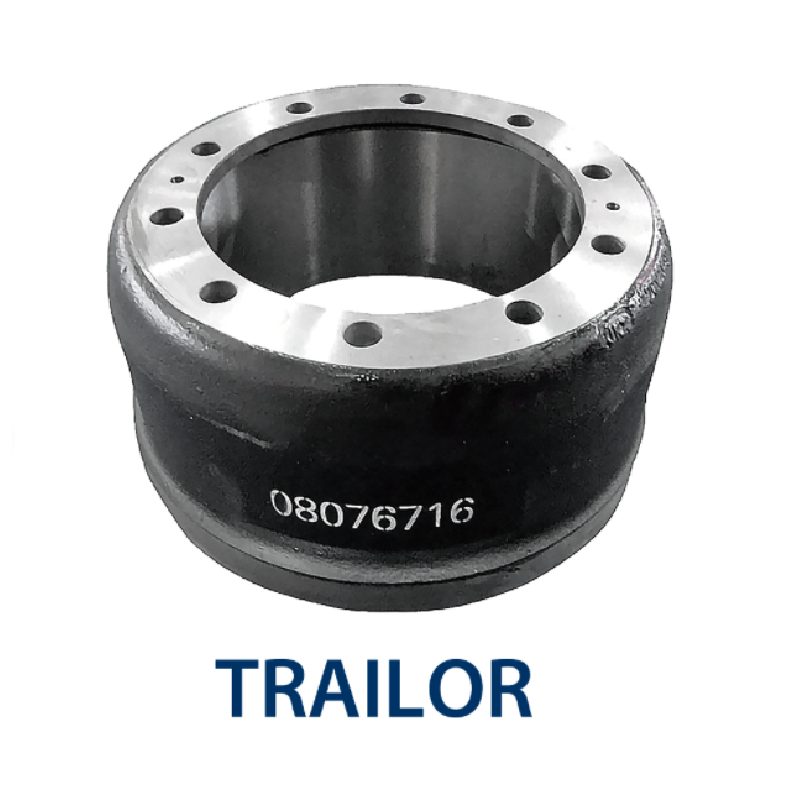Dec . 05, 2024 20:42 Back to list
Converting Brake Drum Systems to Disc Rotors for Enhanced Performance and Safety
Brake Drum to Rotor Conversion A Comprehensive Guide
When it comes to vehicle braking systems, the choice between drum brakes and disc brakes is crucial both for safety and performance. As automotive technology continues to advance, many enthusiasts and mechanics are considering converting from brake drums to rotors. This conversion can enhance braking efficiency, reduce maintenance needs, and ultimately improve driving experience. In this article, we will explore the benefits of this conversion, the process, and the essential considerations to keep in mind.
Understanding Brake Systems
Before diving into the conversion process, it’s essential to understand the differences between brake drums and rotors. Drum brakes consist of a cylindrical drum that rotates with the wheel. When the brake pedal is pressed, brake shoes expand against the inner surface of the drum, creating friction to slow down the vehicle. In contrast, disc brakes use a rotor (or disc) attached to the wheel hub, and brake pads clamp down on the rotor to create friction.
While drum brakes are effective and typically more cost-effective for smaller vehicles, they often exhibit disadvantages in terms of heat dissipation and overall performance, especially under heavy loads or aggressive driving conditions. Disc brakes, on the other hand, offer superior heat management and consistent stopping power, making them the preferred choice for high-performance vehicles.
Benefits of Converting to Disc Brakes
1. Enhanced Performance Disc brakes provide better stopping power and more consistent braking performance. This is particularly noticeable in high-speed driving and during repeated braking scenarios, such as when driving downhill or on the race track.
2. Improved Heat Dissipation The design of disc brakes allows for better airflow around the braking components, reducing the likelihood of brake fade due to overheating.
3. Reduced Maintenance Disc brakes typically require less frequent servicing compared to drum brakes. The open design allows for easier inspection and replacement of brake pads without the need to disassemble the entire assembly.
4. Upgrading Aesthetics Many car enthusiasts appreciate the modern aesthetics of disc brakes. The exposed rotors can enhance the visual appeal of the vehicle.
The Conversion Process
brake drum to rotor conversion

Converting from drum brakes to disc brakes involves several steps, which can vary depending on the vehicle make and model. Here’s a general outline of the conversion process
1. Research and Planning Start by researching the specific components required for your vehicle. Many aftermarket companies offer conversion kits designed for popular model vehicles. Ensure you understand the specific parts needed rotors, calipers, mounts, and brake lines.
2. Gather Tools and Parts Acquire all necessary tools, including wrenches, jacks, and screwdrivers. Purchase the required components, either individually or as part of a kit.
3. Remove Existing Drum Brakes Safely lift the vehicle and remove the wheels. Disconnect the brake lines, and unbolt the drum brakes, carefully taking note of the arrangement for reinstallation of the new components.
4. Install the Disc Brake System Follow the instructions provided with your conversion kit. Install the new brake brackets, rotors, calipers, and any additional components. Ensure that all fittings and connections are secure.
5. Bleed the Brakes After installation, bleed the brake system to remove any air from the brake lines. This step is crucial for ensuring that the new brakes operate effectively.
6. Test Drive Once everything is installed and checked, embark on a careful test drive, paying attention to the feel of the brakes and ensuring that everything is functioning correctly.
Final Considerations
While converting from brake drums to rotors can result in significant performance benefits, it’s vital to consider compatibility with your vehicle’s existing systems and consult with a professional if you’re unsure about any part of the process. Additionally, ensure that your vehicle’s rest of its braking system is in good condition to handle the new disc brakes effectively.
Ultimately, the conversion from brake drums to rotors can dramatically improve your vehicle's performance and safety. As automotive technology evolves, making informed decisions about your braking system can lead to a much more enjoyable and secure driving experience.
-
Durable Brake Drum MAZ for Heavy Duty Trucks | High Performance
NewsAug.26,2025
-
FUWA: Premium Quality, Reliable Performance & Innovative Solutions
NewsAug.25,2025
-
Liza Brake Drum: Superior Quality & Performance for Safe Driving
NewsAug.24,2025
-
Iveco Brake Drum | Premium OE Quality for Daily & Eurocargo
NewsAug.22,2025
-
Your Brake Drum Man: Quality & Performance Parts
NewsAug.21,2025
-
Explore Japan: Ultimate Travel Guide & Authentic Experiences
NewsAug.19,2025
